- Accueil
- > L’Oeil du Spectateur
- > N°9 — Saison 2016-2017
- > Adaptations scéniques de pièces de Shakespeare et ...
- > Twelfth Night in Switzerland: a Burlesque Comedy
Twelfth Night in Switzerland: a Burlesque Comedy
La Nuit des rois / Twelfth Night, Collège de Gambach, Fribourg, Switzerland, 19th November 2016, Directed by Yves Loutan, Troupe Funambule, Front stalls, stage left
Par Charlène Cruxent
Publication en ligne le 31 janvier 2017
Table des matières
Texte intégral
Twelfth Night in Switzerland: A Burlesque Comedy
From School to Stage: When Passion Gathers Budding Comedians
1The theatre company "Funamble" was created in March 2013 in Fribourg under the supervision of Jacques Deillon and Yves Loutan in order to reunite the former members of Gambach secondary school theatre group. Twelfth Night was their first performance, but those theatre-enthusiasts cannot be considered as beginners: they had already performed together inA Midsummer Night’s Dream, Antigonus and The Imaginary Invalid, among other plays, as teenagers.
2The theatre company had announced their first production would be Twelfth Night, a "burlesque off-the-wall comedy." To say the least, the spectators were not disappointed! Even before the beginning of the show, the farcical tone of the play was set: while the audience was waiting in the vestibule, an actor dressed up as a sixteenth-century guard shouted "be aware of the guards" and walked through the crowd. Leading the way to the auditorium, he jabbered a few words before opening the door and inviting the spectators to enter.
3When the performance began, an aerie atmosphere was suggested by clouds of white smoke and fairy-like music. A papier mâché boat brought Viola onstage, taking the audience on a journey to "a world full of poetry and laughter."1
Twelfth Night in 21st Century Switzerland
4The structure of the Shakespearean plot remains intact: after a shipwreck, Viola loses Sebastian, her twin brother, and decides to disguise herself as a young man assuming the name "Cesario" for protection. She then becomes the page of Orsino, Duke of Illyria, who entrusts her with the task of wooing a countess. However, Countess Olivia falls deeply in love with Cesario/Viola, while the latter is actually enamoured of Orsino. As it happens, Viola’s brother reappears and Olivia, who mistakes Sebastian for his twin sister, ends up marrying the brother without knowing it. The final scene reveals the existence of the twins, thus explaining the confusion. Although director Yves Loutan generally follows the initial plot and subplots, he also alters a few details in order to either enhance the humorous potential of this play, and/or to make the jokes more meaningful to a twenty-first century audience. For instance, the clown Feste (Ethiopia Girma) is given a female companion, Festine (Laurie Wicht), who has a larger role than he does.

Figure 1: Feste (Ethiopia Girma) and Festine (Laurie Wicht).
Copyright: Yanneck Zamofing
5The presence of this couple echoes Feste’s mention of "the picture of ’we three’"2 (2.3.16), an early modern visual gag consisting in a picture of two fools holding a wooden stick bearing a portrait (Figure 2). The jest resides in the props: the face could be seen as the viewer’s reflection, thereby making him/her the third fool in the picture.

Figure 2: We Three Loggerheads, circa 1600-25, Oil on wood, 61cmX40.5cm. Owned by the Shakespeare Birthplace Trust, Stratford-upon-Avon
6If Laurie Wicht and Ethiopia Girma perform the two main fools, then the audience becomes the third one. As the saying goes: the more, the merrier. Interestingly, both actors mention this phrase, which is translated in French by "plus on est de fous, plus on rit" (literally, "the more fools we are, the more we laugh").
7Twelfth Night is a comedy based on puns and misunderstandings, which is particularly striking in this adaptation. Even if Renaissance costumes are used, several other features hint at the geographical and temporal locations of this production. The main one is language: the performance takes place in French, but several alterations trigger comic effects. In an officially quadrilingual country, one can imagine that polyglossia may constitute a useful tool to convey humour.3 It is all the truer in Fribourg, the only bilingual city in Switzerland, where both French and German can be heard. In this adaptation, when Toby asks Andrew why he wants to leave Illyria, using a French word ("Pourquoi, my dear knight?"), Andrew’s answer "What is ’Pourquoi’? Do or not do?" (1.3.89) is adapted to the French-speaking part of Switzerland and becomes "What is ’Varum’? Do or not do?". Here the German "varum" replaces the original French "pourquoi", but its foreign aspect is not lost since more than sixty percent of the Fribourg inhabitants are French-speakers.4
8Also, among the numerous songs punctuating the performance, the French Renaissance bawdy song "La digue du cul" ("The Bulwark of Sex") has been chosen to replace Feste’s ballad. The title of this French ribald tune designates a place close to Nantes where people would gather in the Middle Ages in search of a sexual partner. Despite the presence of this French reference, Yves Loutan does not put a different spin on the original ballad: Toby and Andrew pay Feste to sing a "love-song" (2.3.34-43), and the latter narrates the story of a man urging a lady to stop her journey in order to stay with him (implying he would like to share a moment of intimacy with her). "The Bulwark of Sex" seems to be an appropriate equivalent for the fool’s "love-song" since it conveys the same bawdy connotations while being more familiar to a Swiss audience. The other city mentioned in this song, "Montaigu," may have also influenced Loutan in his selection, reminding him of Juliet’s tragic beloved in Shakespeare’s Romeo and Juliet.
9A similar technique depicts Olivia in a more appealing way for Francophone spectators. Twelfth Night starts with Duke Orsino complaining about the unrequited feelings he has for the countess. Loutan’s production starts with Viola’s arrival, and Orsino’s first lines "If music be the food of love, play on. / Give me excess of it, that, surfeiting, / the appetite may sicken and so die." (1.1.1-3), find an echo in Olivia’s cravings. Indeed, her "food of love" is not music, but actual cuisine. When the countess meets Cesario for the first time, a servant holding a tray full of chocolate-coated balls (Figure 3) appears in the background. She will be present every time Olivia is on stage, always casting an envious glance at the delicious products she is carrying. Her temptation is significant because of chocolate’s reputation as an aphrodisiac.5 Olivia does not seem to notice the presence of the tray until the moment she cannot cope with Cesario’s rejection anymore and finally eats a piece of chocolate. This gesture seems liberating, as if consuming this product satisfied Olivia’s sensual needs and allowed her to achieve her ends. The presence of these chocolate sweets represents her latent desire: the countess vowed to remain hidden in her room for seven years in order to mourn her deceased brother. Even if she has refrained from passion, the apparition of the page in her life unleashed all of her longings. This savouring scene is aesthetically similar to passages in Sofia Coppola’s film, Marie Antoinette, when the queen takes pleasure in eating French pastry (Figure 6). Lauriane Bergnard’s white wig (Figure 4) echoes Kirsten Dunst’s hair style (Figure 5), and Marie Antoinette’s relaxed attitude can also be found in Olivia’s liberation after she has eaten confectionery. The difference is in the product: it was inevitable for a Swiss heroine to be delighted in enjoying a chocolate-coated sweetmeat, Switzerland being famous for its high-quality chocolate.

Figure 3: A servant (Monica Quevedo).
Copyright: Yanneck Zamofing

Figure 4: Countess Olivia (Lauriane Bregnard).
Copyright: Yanneck Zamofing
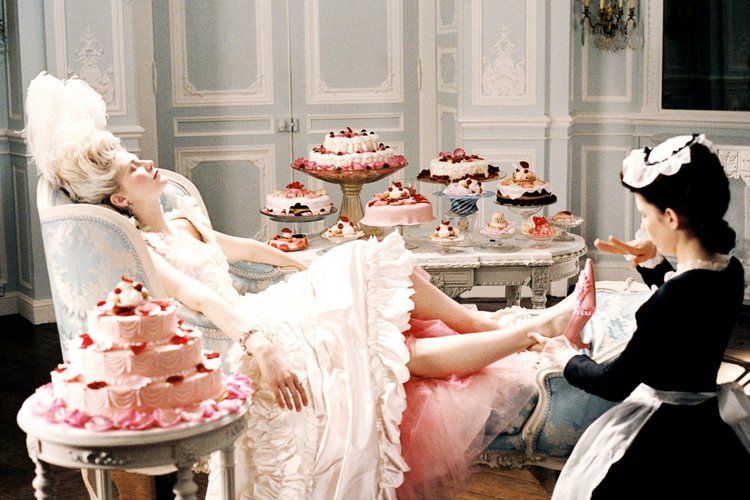
Figure 5: Marie Antoinette (Kirsten Dunst) relaxing among cakes
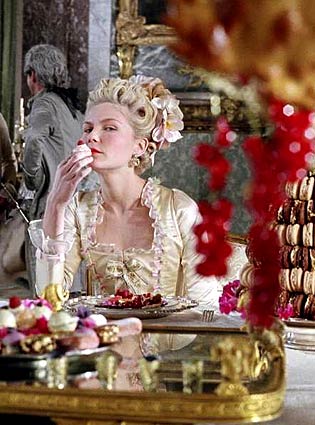
Figure 6: Marie Antoinette savouring French delicacies
Of Men and Beasts
10A group of characters counterbalance Olivia’s sensual femininity by adding bestial overtones to the plot. Indeed, from the beginning to the end, male characters are paralleled with, or act as, beasts. Duke Orsino’s first entrance on stage is particularly conspicuous since a lion appears simultaneously with him. A man wearing a lion’s head follows him, as if it were his shadow, striking static and stately poses when Orsino stops walking (Figure 7). As a symbol, the lion is a strategic choice:
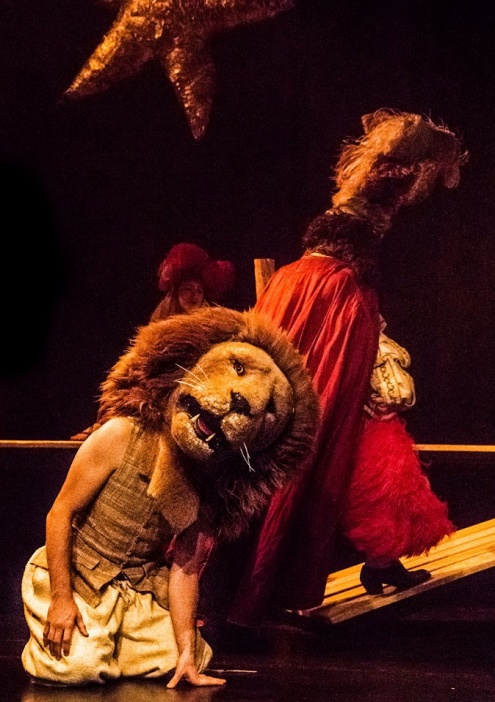
Figure 7 : Lion (Yves Loutan) following Duke Orsino (Jacques Deillon).
Copyright : Yanneck Zamofing
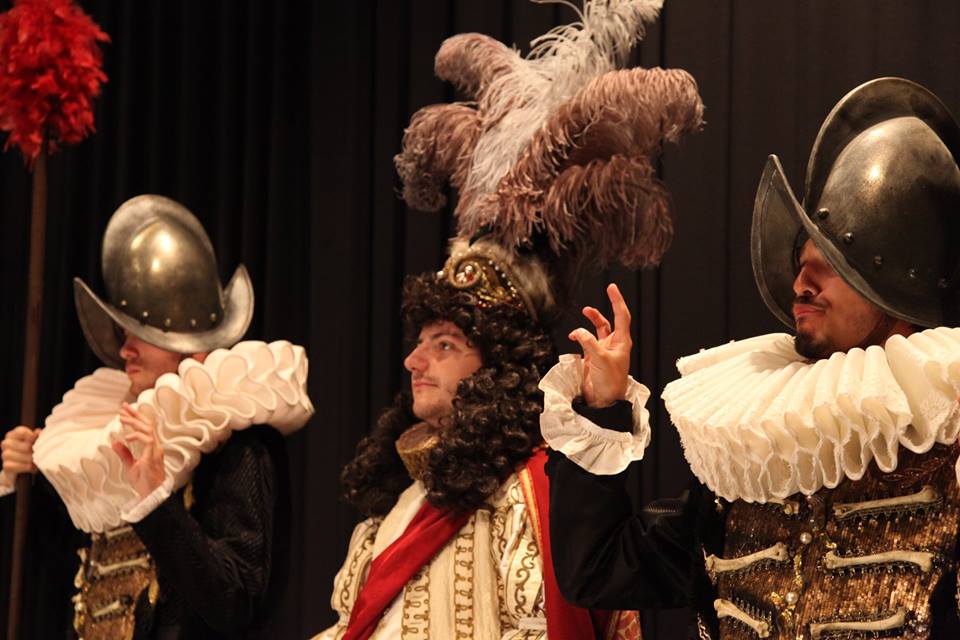
Figure 8: Orsino (Jacques Deillon) and his guards (Gaetan Brugger, Ary Hipolito).
Copyright: Yves Loutan
11even before the audience hears Orsino talking, we understand that this character must be linked to regal authority; and since Viola mentioned the ruler of Illyria the scene before, the lion appears as the embodiment of Orsino’s power. The count himself shows lion-like features: with his ostrich feather hat and his hair (not to say his mane), one could compare his face to the one of the wild animal (Figure 8). He first appears as capricious when he explains in an almost childish way to Cesario/Viola that he requires Olivia’s heart, as if the countess was an object he was entitled to possess as the duke of this island. Orsino later becomes temperamental after Olivia’s second refusal, his anger reaching a deadly climax: he kills the lion he has been seen with. The French set phrase "un ours mal léché" (a grumpy old thing, literally "ill-mannered bear") perfectly fits the duke, whose very name links him to a bestial behaviour. Orsino means "little bear"6 in Latin. The adjective "little" is all the more relevant since the duke, under a gruff exterior, loudly squeaks when the shot rings out and almost hurts himself.
12The case of Duke Orsino is not isolated; most male characters display beast-like features. However, if the ruler of Illyria sometimes undertakes brutish actions, he remains a gentleman with whom discussion is possible. This is not the case when it comes to personae such as the guards. They appear as barbarians; not only because of their uncontrolled jerking movements, but also as a result of their verbal expression since they are speaking a language the audience cannot understand.7 They only utter a few words such as "stop" and "walk", and most of the time they just jabber unintelligible sentences, which makes them sound more like animals than humans. This is all the truer when the guards face characters disturbing public order: when Sir Toby Belch, Sir Andrew Aguecheek, the fools, and the guards happen to be on stage at the same time, raising a cacophony. They start to argue in loud voices, quickly switching to noises, and finishing their altercation barking. Gestures also reinforce the idea that one could witness this kind of scene in a henhouse: the guards shake the red plumes on top of their spikes (figure 8, upper-left corner), Festine vivaciously waves her feathery hat in such way as to reproduce the movement of an animal’s crest (Figure 1), and the other individuals move around with their hands up in the air. This cacophonic confrontation recalls a previous scene where Toby, Andrew, and the fools were singing songs. One of the ballads is punctuated by the onomatopoeia "woof," as if the members of the choir were turning into dogs as the song becomes more salacious.
13Malvolio (Martin Sciboz) is particularly bestial. Each time he enters the stage, Olivia’s steward grumbles, not to say growls, and twitching movements can be observed on his face, as if he were suffering from nervous ticks (Figure 9).
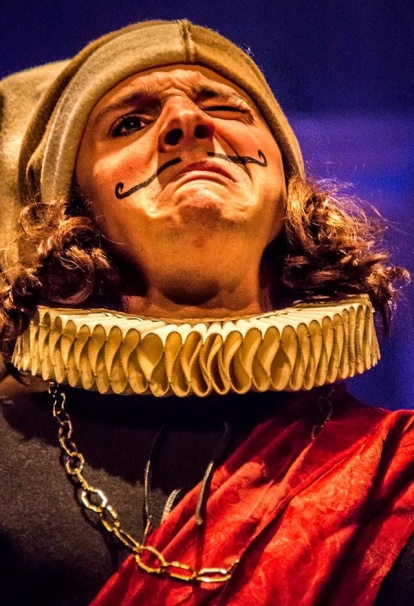
Figure 9: Malvolio (Martin Sciboz) and his facial ticks.
Copyright: Yanneck Zamofing
14After having read what he believes to be the countess’s letter in which she confesses her love for "M.O.A.I.", an anagram Malvolio identifies with his own name (2.5.102-39), the steward attempts to show Olivia that her feelings are reciprocated, but he does so in a very primitive way trying to lick her face (Figure 10).
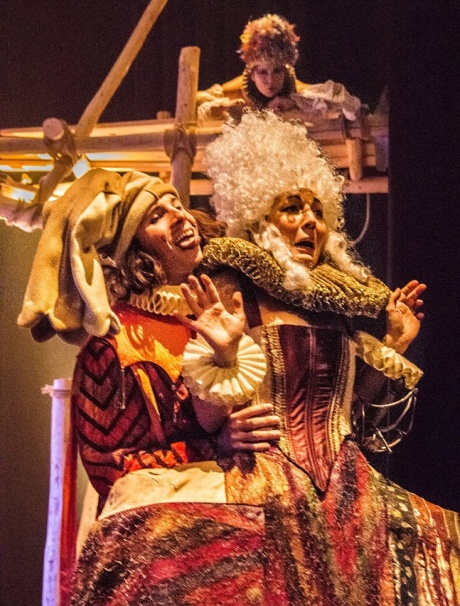
Figure 10: Malvolio trying to seduce Olivia after he has read the letter.
Copyright: Yanneck Zamofing
15This characterisation of Malvolio portrays him as a brutal and repugnant person, the most beastly character on stage. With this in mind, Malviolio’s subplot can be apprehended as the inverted version of the tale "Beauty and the Beast." Indeed, Beauty (Olivia) owns the place where the Beast (Malvolio) is residing as her steward. He is at her service, and he is led to think that Olivia is secretly in love with him. It turns out to be a false hope, and in Yves Loutan’s adaptation, Malvolio is wearing a straitjacket in the last scene. It seems that his imprisonment made him go mad: just like a wild animal in a cage, he has been deprived of his natural environment, which results in a more agitated and aggressive behaviour. When he learns that Maria had made up the whole story, he goes into violent convulsions and loses consciousness. This performance depicts Malvolio as a "monster": he is agonising on the apron stage, under the eyes of the audience and the actors, on display in order to punish him for his greedy ambitionsand his tyrannical authority.8 Throughout the play, Martin Sciboz performs as an overly masculine, tawdry character constantly trying to establish himself as superior to his peers. He displays his male attributes, embodied by a long sword and a protuberant codpiece (Figure 11), that he proudly puts forward as he lashes out at Festine and challenges Sir Toby Belch to a duel.
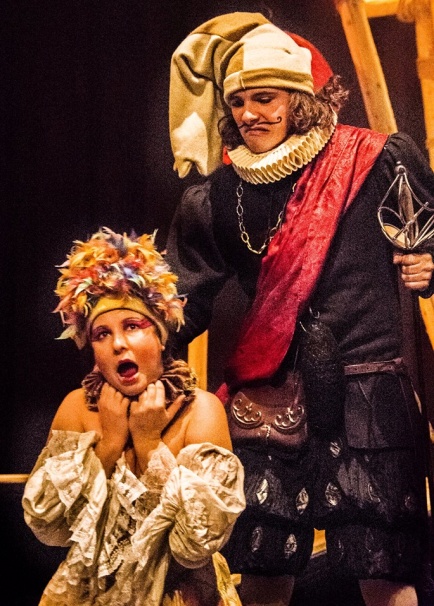
Figure 11: Malvolio lashing out at Festine while Olivia is speaking with her.
Copyright: Yanneck Zamofing
16The scene where Malvolio interrupts Sir Toby Belch, Sir Andrew Aguecheek, and Feste while they are singing is more violent and sexually suggestive in this Swiss version. Sir Toby’s drunken repartee irritates Malvolio, who draws his sword. This gesture does not affect Olivia’s kinsman who keeps on ignoring the steward’s warnings. Nonetheless, Malvolio finally manages to frighten his adversary by exhibiting his codpiece close to him. Belch’s first reaction is to fall on the ground, but he soon finds another way to retaliate: he turns his back on Malvolio and sticks his buttocks out, as if he were expecting the steward to engage in sexual activities. This position scares Malvolio off, but leaves Sir Andrew pensive. It is true that Aguecheek, who acknowledges to be "a dog at a catch" (2.3.59-60), sometimes literally behaves like a rutting dog in Toby’s presence. The two men’s friendship is often described as having homoerotic undertones, and Loutan’s production presents an obvious "friends-with-benefit" type of relationship. The first time Andrew meets Toby on stage, Maria is sitting on Belch’s lap and this vision terrifies Sir Aguecheek, who cannot help but scream in a very effeminate way. A similar scene will occur again, but this time with Festine as the female tempter. Once Andrew’s shrill scream scares Maria away, the man can interact with his companion, kissing him hello on the lips. Toby then initiates a kind of rutting ritual during which both men smell each other’s body, from tip to toe. As the rut becomes more intense, Andrew bites Toby’s leg and moans with pleasure. He will do the same to Feste while Toby is flirting with Festine. On stage, Belch and Aguecheek are always physically close. They even lie on top of each other three times: the first time they meet; when they are watching Malvolio reading the letter (Figure 12); and when they are interrupted by Cesario’s arrival (Figure 13).
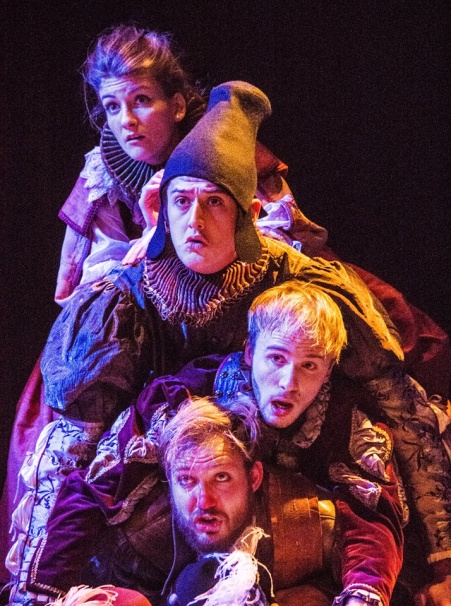
Figure 12: Maria (Lisa Ducret), Fabian (Philippe Haenni), Sir Andrew (Benjamin Barillon), and Sir Toby (Emile Monney).
Copyright: Yanneck Zamofing
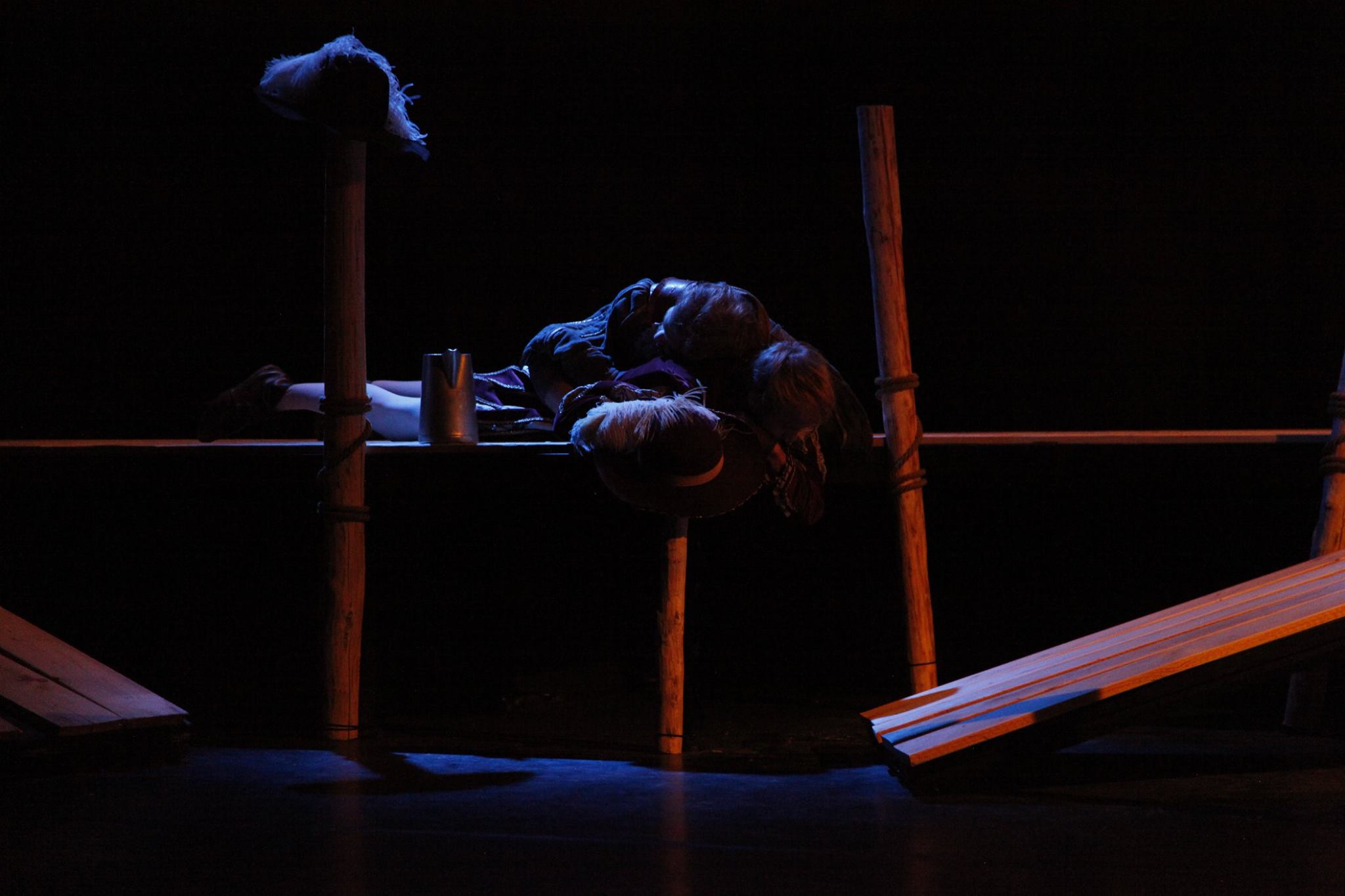
Figure 13: Toby lying on Andrew before Cesario’s arrival.
Copyright: Yves Loutan
17Interestingly, Figure 12 shows that Fabian (Philippe Haenni) is also lying on Toby and Andrew, while Maria is standing behind them. The actor cast in this role also performs as the priest who marries Olivia and Sebastian. Towards the end of the play, Aguecheek throws himself into the arms of this religious figure, claiming that Cesario made an attempt on his life (Figure 14). While the priest gently caresses his hair, the distraught man calms down, giving way to the recognition scene. Shifting his mood at a whim, Andrew is angry, then surprised, and finally extremely moved when Orsino proposes to Viola, to the point that he cries his eyes out.
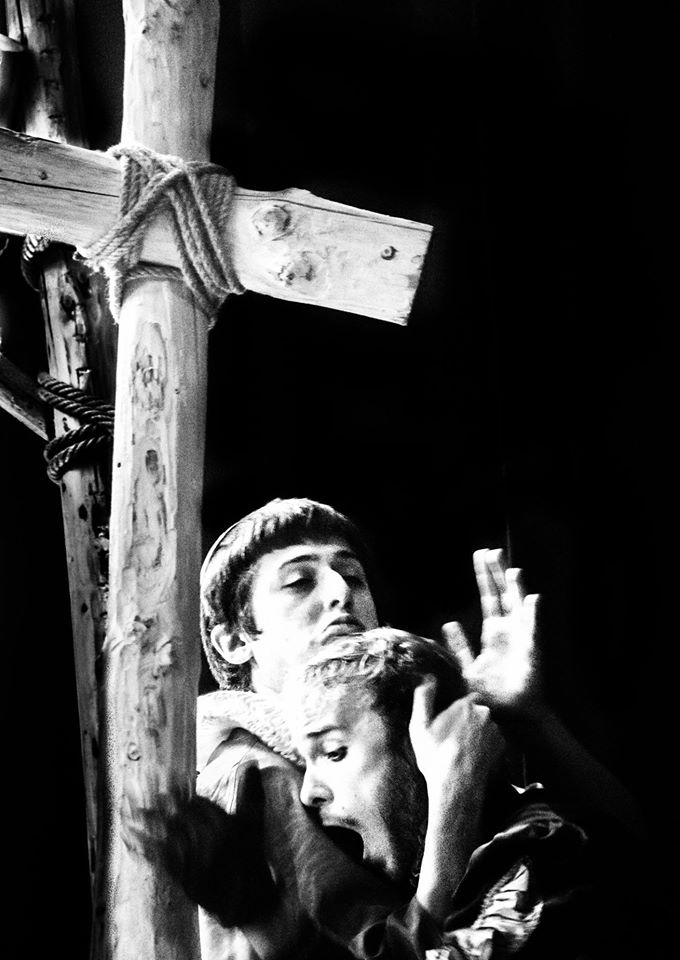
Figure 14: A priest (Philippe Haenni) comforting Sir Andrew after a fight.
Copyright: Yanneck Zamofing
Last but not least: A Tribute to Funambule
18The theatre company "Funambule" has succeeded in its challenge: presenting William Shakespeare’s Twelfth Night in a more accessible way to a twenty-first century Swiss audience, while remaining true to the original plot of the play. Of course, some alterations were made, such as the use of different languages, the addition of popular cultural elements, or the openly homoerotic relation between Sir Toby Belch and Sir Andrew Aguecheek. But these alterations were essential to bring a more contemporary feature to the performance, thereby making it more familiar and easier to understand for Swiss spectators.
19Despite a rather minimalist stage design (figure 14), the audience easily enters Funambule’s world, delighted by the actors’ vitality and interactions. The complicity between the comedians gives the performance a sense of completeness:
There’s a reason we say to "play" (jouer) like children do… There is always a sort of complicity between actors. We have memories in common, of the creation together, of incidents that took place. In the theatre, we meet up with one another again (on se retrouve).9
20Mark Ingram comments on the words of Hélène Bourdier, a French actress, explaining that "meeting up together" – "se retouver" in French – has actually several meanings: "meeting up with one another", "finding ourselves together again", and "to find our bearings.”10 This adaptation of Twelfth Night would not be the same without the background of "Funambule"; the actors grew up together and learned how to play collectively. Performing their first production in the auditorium of Collège de Gambach was an obvious choice: the seeds they planted as pupils have proved fertile, and the audience can now observe a blossoming flower. So hats off to this group of energetic and talented actors: far from being only Gambach’s former theatre group pupils, they can now compete with any professional theatre company.
21This production also celebrates four hundred years of the Bard of Avon’s legacy. The bilingual city of Fribourg seemed to be a fitting place to honour one of the most translated authors in history. If some critics consider translating Shakespeare as perilous, the theatre company Funambule showed that whatever the language, a performance will be true to a dramatist’s play if the actors attempt to convey its original atmosphere; even if this implies incorporating twenty-first century elements into the plot.
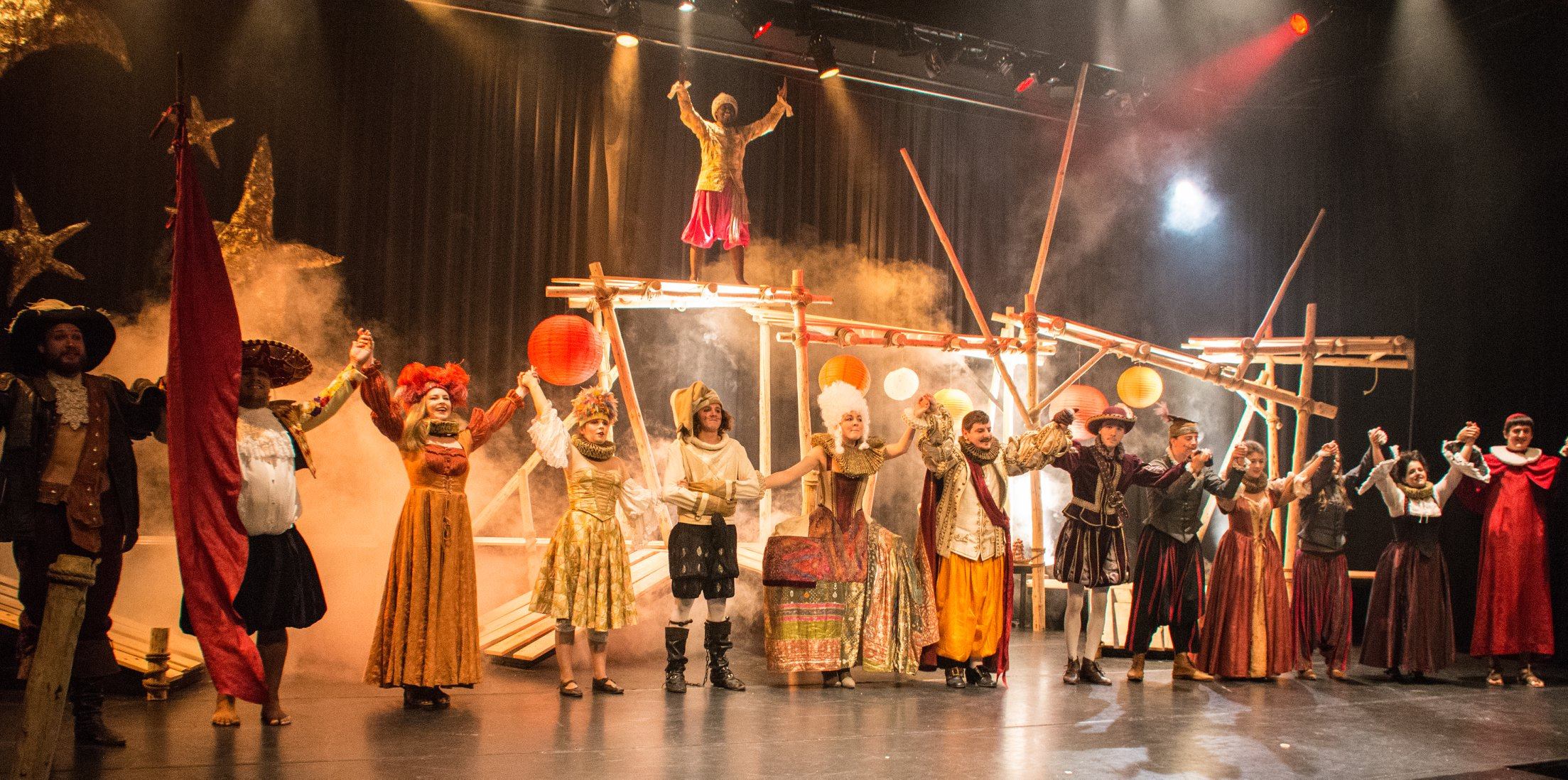
Bibliographie
Figure 15: The actors greeting the audience.
Copyright: Yanneck Zamofing
COPPOLA, Sofia, Marie Antoinette, American Zoetrope, Pathé Distribution, 2006.
ELAM, Keir, ed. Twelfth Night, by William Shakespeare, London, Arden Shakespeare, Third Series, 2013.
HARPER, Douglas, Online Etymology Dictionary,http://www.etymonline.com/index.php.
INGRAM, Mark, Rites of the Republic: Citizen’s Theatre and the Politics of Culture in Southern France, Toronto, University of Toronto Press, 2011.
SCHLEINER, Winfried, "Orsino and Viola: Are the Names of Serious Characters in Twelfth Night meaningful?", Shakespeare Studies, 16 (1983), p. 135-141.
SOLANIA, A., et al., "Chocolate and women’s sexual health: An intriguing correlation", The Journal of Sexual Medicine, 3.3 (2016), p. 476-482.
Notes
1 Leaflet advertising the performance. http://www.troupe-funambule.ch/category/accueil/.
2 William Shakespeare, Twelfth Night, ed. Keir Elam, London : Arden Shakespeare, 2013, p. 212.
3 German, French, Italian, and Romansch are the four official languages in Switzerland.
4 For more information, visit swissinfo.ch and http://www.dfag.org/translationEN.
5 This fact has never been scientifically proved, but this notion has endured for three centuries. Recent studies demonstrate that some chemicals present in cocoa beans do indeed have an effect on male and female hormones. See A. Solania et al., "Chocolate and women's sexual health : An intriguing correlation", The Journal of Sexual Medicine, 3.3 (2016), p. 476-82.
6 For more information on Orsino’s name, see Winfried Schleiner, "Orsino and Viola : Are the Names of Serious Characters in Twelfth Night meaningful ?", Shakespeare Studies, 16 (1983), p. 135-41.
7 The Online Etymology Dictionary explains that the term "barbarian" comes "from the PIE root barbar- echoic of unintelligible speech of foreigners (compare Sanskrit barbara-'stammering,' also 'non-Aryan,' Latin balbus 'stammering', Czech blblati 'to stammer')." Douglas Haper, Online Etymology Dictionary.
http://www.etymonline.com/index.php?term=barbarian&allowed_in_frame=0/.
8 In Shakespeare’s play, Malvolio leaves the stage after he understands Maria’s trick and starts to feel humiliated, threatening his peers to take revenge in the future (5.1.371). In Yves Loutan’s production, the steward is not given this opportunity.
9 Mark Ingram, Rites of the Republic : Citizen’s Theatre and the Politics of Culture in Southern France, Toronto : University of Toronto Press, 2011, p. 193.
10 Ibid., p. 193-4.